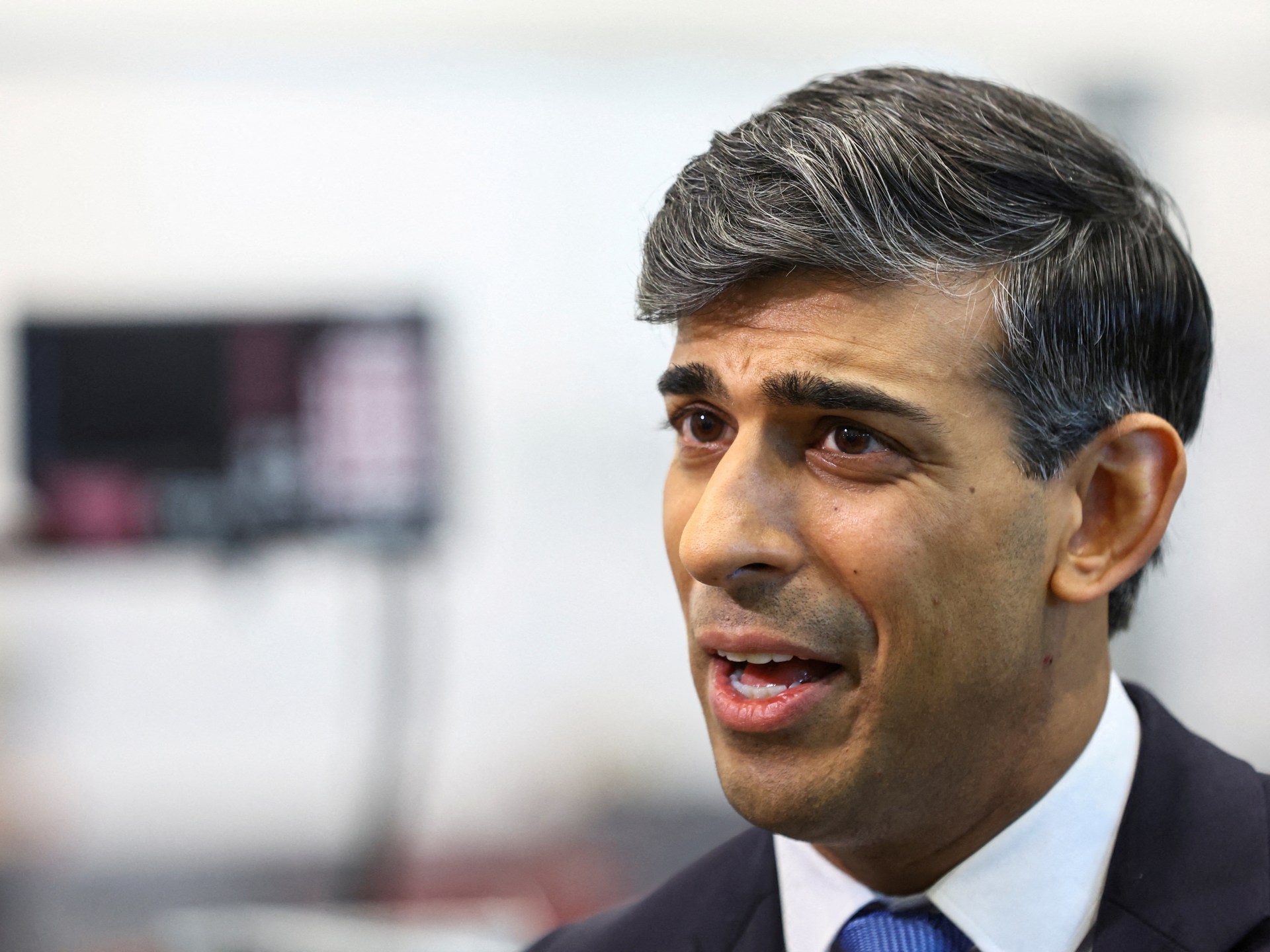Finance
Collateralized Fund Obligations: A Growing CDO/CLO And Fund Finance Liquidity Solution – Fund Finance – United States

Executive Summary
One of the hottest fund finance trends is an alternative
investment vehicle that has become increasingly popular. A close
sibling of collateralized debt obligations (“CDOs”),
collateralized fund obligations (“CFOs”) are a vehicle
for securitizing portfolios of alternative or real assets,
including interests in private equity funds, hedge funds, private
credit funds, infrastructure and real estate debt and equity, and
other similar investments (“Underlying Fund Interests”).
In this Legal Update, we explain the history, structure, and
variations of these alternative financing vehicles, so sponsors and
investors can determine if a CFO transaction aligns with their
business objectives.
Background and History
CFOs first emerged in the early 2000s, but were only
infrequently used. According to rating agency Fitch, between 2003
and 2006, six private equity versions of CFOs were issued. Our
first private equity CFO was in 2004, and our first hedge fund CFOs
were in 2006.
In the years following the financial crisis, from 2007 to 2013,
no CFOs were issued. Over the past decade, however, CFOs have been
issued with increased frequency as a way for portfolio investors,
secondary funds, and funds of funds (each, an “Investor”)
to layer rated capital markets financing vehicles on top of pools
of Underlying Fund Interests with diverse characteristics.
Additionally, CFOs can facilitate the monetization of certain
holdings in their investment portfolio earlier by generating
short-term liquidity without forgoing the longer-term upside of the
Underlying Fund Interests.
Discussion
What is a Collateralized Fund Obligation?
While CFOs can take various forms, they are essentially created
when a bankruptcy-remote special purpose entity (“CFO
Issuer”) acquires a diversified portfolio of Underlying Fund
Interests. To finance that acquisition, the CFO Issuer issues
tranches of rated notes and equity (collectively, “CFO
Securities”), which are secured by the Underlying Fund
Interests owned by the CFO Issuer or its subsidiary. More senior
tranches benefit from credit enhancement features, and, when
necessary, interest and principal payments that would otherwise be
allocated to junior tranches are redirected to the senior
tranches.
How are CFOs Structured?
In many ways, CFOs resemble a hybrid of a net-asset-value
(“NAV”) facility and a CDO. CFOs utilize the tranche and
collateral structure of CDOs while incorporating the loan-to-value
metrics found in NAV facilities.
In light of typical restrictions on transfer of limited partner
interests, the Underlying Fund Interests are typically held by a
subsidiary of the CFO Issuer (“Asset HoldCo”). In this
structure, the payments on the Securities are secured by a security
interest in the equity interests issued by the Asset HoldCo to the
CFO Issuer, rather than a direct pledge of the Underlying Fund
Interests.
Consider a sample CFO structure: An investment company-the CFO
Issuer-acquires a stake in a pool of private equity funds through
its subsidiary, Asset HoldCo. The CFO Issuer also acquires
interests in other portfolio assets, such as money market funds and
other liquid products.
View image in new tab
What are Some Variations of CFOs?
CFOs can be tailored to meet many different needs and
situations. Some of the more common variations include:
- Type of Underlying Investments and Strategies.
Most CFO Underlying Fund Interests consist of limited partner (LP)
interests in private equity funds, hedge funds, energy funds,
infrastructure funds, and venture capital funds. In addition, some
CFOs include a broader range of investments such as equity stakes
in CLOs or other asset-backed securitizations, co-investments in
portfolio companies or syndicated loan assets. Including fixed
income assets in the portfolio can help to ensure sufficient
regular cash flow to satisfy payments on the CFO’s liabilities
and capital calls on the Underlying Fund Interests. - Fixed Portfolio vs. Adjustable Portfolio. Some
CFOs have a fixed portfolio at closing, and the CFO Issuer does not
reinvest in other funds throughout the life cycle of the CFO. In
other CFOs, the CFO Issuer may not have the intended final
portfolio at closing, and may initially invest in liquid positions
pending the identification and investment in such final portfolio.
The CFO may be able to reinvest proceeds during a specified period
post-closing (e.g., three years) to optimize the duration for the
Underlying Fund Interests. - Amortization and Repayment of Principal. Most
CFOs have an amortization period of up to five years. During this
time, the CFO Issuer will pay down its debt to Investors according
to a pre-defined amortization schedule. If the CFO Issuer cannot
pay down the principal as required, interest payments may be
subject to a stated increase. - Loan-To-Value Test Breaches. If the CFO Issuer
breaches the specified loan-to-value (“LTV”) test, the
CFO terms will likely require the CFO Issuer to restrict
distributions to Investors in the equity or even mezzanine
tranches. Typically, the LTV breach will not trigger a default
under the terms of the CFO. - Pool Breadth and Depth. Some CFOs acquire and
hold Underlying Fund Interests only in funds managed by the CFO
manager (or its affiliates) while others allow Underlying Fund
Interests with third-party managers. CFOs can be structured
variously with pool sizes ranging from fewer than ten Underlying
Fund Interests up to a hundred or more Underlying Fund
Interests. - Maturity of Investment Pool. Underlying Fund
Interests can also have a range of anticipated maturity dates.
Older vintages will distribute cash early on in the life of the
CFO; younger vintages will distribute cash later. A staggered
vintage strategy supports consistent cash flow during the term of
the CFO. For CFOs with Underlying Fund Interests that permit
redemption, redeeming such funds may also provide required
liquidity or available funds for scheduled payments or other
distributions. - Outstanding Capital Commitments of
Investments. When some or all of the Underlying Fund
Interests are not fully drawn and have outstanding capital
commitments, the CFO Issuer typically must ensure ongoing available
capital to fund the capital commitments through a capital call
facility, delayed draw notes, or a cash reserve account.
Are there Any Structuring Challenges?
CFOs have two primary structuring challenges. First, since many
Underlying Fund Interests don’t have specified or consistent
periodic payments (and may themselves be leveraged with senior
secured and mezzanine debt), the timing of dividends and other
distributions paid to Investors on these investments are difficult
to predict. Accordingly, the capital structure of the CFO must
include the ability to defer or capitalize significant current
interest or other payment obligations otherwise owing.
Alternatively, a CFO might utilize a liquidity facility, cash flow
swap, or a similar arrangement to ensure timely payments of
scheduled principal and interest on CFO Securities. Delayed draw
notes, or a cash reserve account, can also help mitigate the risk
that cash flow disruptions could impede payments to Investors.
Second, most private equity investments require an investor to
commit to making capital contributions when called. Accordingly, in
a CFO, unless the Underlying Fund Interests are fully funded when
acquired by the CFO Issuer, the capital structure of the CFO must
include available capital with sufficient flexibility to allow the
CFO Issuer to make its required capital contributions. This
flexibility can also be obtained through a revolving liquidity
facility (discussed below), issuing delayed draw notes, or by
establishing a cash reserve account.
How are Funds Distributed?
As mentioned above, because the CFO may have variable liquidity,
interest and principal payments may be more variable than in a CLO
or ABS transaction. Additionally, a CFO has more restrictions on
distributions to the equity tranche. For instance, the terms of the
CFO may prohibit any distributions to equity tranche for the first
several years of the CFO. In addition, if the CFO allows the CFO
Issuer or CFO Manager to reinvest proceeds from Underlying Fund
Interests, distributions to the equity tranche may also be
deferred.
Depending on cash flow and the specific terms of the CFO
transaction, payments and distributions of the collections on the
Underlying Fund Interests are generally made according to a
priority structure similar to the below:
1st – Administrative expenses (and
management fees, if applicable), subject to a periodic cap
2nd – Fees, expenses, and interest payments of liquidity facility
(if one exists)
3rd – Principal payments of liquidity facility (if one
exists)
4th – Interest payments to noteholders
5th – Principal payments to noteholders (according to amortization
schedule and subject to deferral/capitalization if there is
insufficient available cash and no liquidity facility funds)
6th – Administrative expenses that remain unpaid due to the
cap
7th – Distributions to equity
How Does a CFO Access Required Funds and Short-Term
Liquidity?
Many CFOs provide that CFO Issuers are only required to make
interest payments on senior notes if there is adequate cash flow.
If the CFO Issuer lacks sufficient cash, the interest payments may
be deferred until the next payment date. However, some CFOs require
that the CFO Issuer-or Asset HoldCo, if one is used-hold some
percentage of its assets in money market funds or other lower-risk
liquid assets. Additionally, the CFO Issuer will often enter into a
revolving liquidity facility with a third-party lender, such as a
bank, to ensure that the CFO Issuer has adequate funds to make
scheduled interest payments to Investors if it lacks sufficient
cash.
Although the liquidity facility may not need to be fully
utilized, its availability reduces the risk that the CFO Issuer
won’t be able to make interest payments or meet its
amortization schedule. In addition, a liquidity facility protects
against default provisions and the adverse consequences of failing
to fund capital commitments on the Underlying Fund Interests.
Accordingly, a liquidity facility helps the CFO achieve its
enhanced credit ratings (and may be subject to counterparty rating
requirements imposed by the rating agency).
Next Steps
As CFOs become increasingly popular, investors will want to
understand the history, structure, and variations of these
alternative financing vehicles so they can determine if a CFO
transaction aligns with their investment strategy. For additional
information on CFOs, you can read the following Legal Updates:
Visit us at
mayerbrown.com
Mayer Brown is a global services provider comprising
associated legal practices that are separate entities, including
Mayer Brown LLP (Illinois, USA), Mayer Brown International LLP
(England & Wales), Mayer Brown (a Hong Kong partnership) and
Tauil & Chequer Advogados (a Brazilian law partnership) and
non-legal service providers, which provide consultancy services
(collectively, the “Mayer Brown Practices”). The Mayer
Brown Practices are established in various jurisdictions and may be
a legal person or a partnership. PK Wong & Nair LLC
(“PKWN”) is the constituent Singapore law practice of our
licensed joint law venture in Singapore, Mayer Brown PK Wong &
Nair Pte. Ltd. Details of the individual Mayer Brown Practices and
PKWN can be found in the Legal Notices section of our website.
“Mayer Brown” and the Mayer Brown logo are the trademarks
of Mayer Brown.
© Copyright 2023. The Mayer Brown Practices. All rights
reserved.
This
Mayer Brown article provides information and comments on legal
issues and developments of interest. The foregoing is not a
comprehensive treatment of the subject matter covered and is not
intended to provide legal advice. Readers should seek specific
legal advice before taking any action with respect to the matters
discussed herein.

Finance
Jude Wilson helps clients achieve financial goals with smart planning

ORLANDO, Fla. – This week on “Black Men Sundays,” host Corie Murray interviews Jude Wilson, the Chief Wealth Strategist at Centrus Financial Strategies.
Wilson has an impressive educational background with two bachelor’s degrees — one in marketing, and one in finance from Florida State University — as well as a master’s degree in business administration from Rollins College.
Wilson spoke with Murray about the steps one should take when selecting a financial advisor.
[EXCLUSIVE: Become a News 6 Insider (it’s FREE) | PINIT! Share your photos]
“You want to look for someone who is actually providing comprehensive financial advice, looking at all aspects of your life,” Wilson said. “If the first thing someone says to you is ‘You would be a good candidate for a life insurance policy. We want to make you rich through growing your assets safely and getting a tax-free income from it.’ Oftentimes, people hear that and they get interested, but they don’t understand that that’s one strategy, and you have to be ready for that strategy for it to work.”
Wilson says it’s important for a financial advisor to ask about your future goals and putting together a step-by-step process to achieve them. He introduces his clients to a bucket plan.
“My strategy that we’ve been using to help hundreds of clients get from accumulation, where they’re working to build their net worth to distribution is called the bucket plan. Each dollar should have a purpose, a timeframe, and a goal for dollars that you’re setting aside. So those three buckets all are coordinated with a time and a purpose and what they’re to do for the client.”
When it comes to retirement, most of Wilson’s clients tell him they don’t want to retire at 65 or 70. They want to retire as early as feasible.
“We are challenged to help them figure out a way to get there but to be realistic about it. Some people say, ‘I want to retire in five years’, well, if you’ve got $100 in your 401(k), and you don’t have the ability to put significant money away, you’re not going to retire in five years. We need something that we can document that we can follow, and we can be strategic to help you get from point A to point B.”
Centrus Financial Strategies is located in downtown Orlando. For more information on services, click here.
Hear the full interview in Season 4, Episode 20 of “Black Men Sundays.”
Black Men Sundays talks about building generational wealth. Check out every episode in the media player below.
Copyright 2022 by WKMG ClickOrlando – All rights reserved.
Finance
Finance to Fashion: 5 Content Creators You Shouldn't Miss – News18

Discover the top five influencers you need to follow, spanning finance to fashion. Shreya Jaiswal offers practical financial advice and insights into influencer marketing. Dhiraj Sanap brings laughter with relatable, everyday content. Hitika Sachdev provides genuine beauty product reviews, while Alina Rizvi inspires with creative makeup tutorials. Aryan Nalawade shares stylish, budget-friendly fashion tips for men and women. Follow these influencers for expert advice and inspiration across various domains.
Shreya Jaiswal:
If you are looking for everyday financial and marketing advice, follow Shreya Jaiswal right away. At just 22, she became a Chartered Accountant and co-founded FINTroop, a leading agency in influencer marketing for finance. She collaborates with the most famous brands out there when it comes to finance, and provides the best insights. Awards like the Most Fantastic Creator in the world of startups and marketing highlights her expertise. With a background consulting over 500 clients, she’s not just an influencer but a seasoned pro redefining finance-media intersections. Follow her for practical financial tips made easy to understand.
Dhiraj Sanap
If you’re someone who loves to laugh at everyday stuff and wants to feel like you’re not alone in your quirks, then following Dhiraj Sanap on Instagram is a must. Dhiraj creates the most relatable content, covering everything from relationships to family issues and those funny moments you encounter in daily life. He has a knack for turning those thoughts you have but might not say out loud into hilarious content. Dhiraj is one of the funniest influencers out there, so hit that follow button now for some guaranteed laughs!
Hitika Sachdev
If you’re on the hunt for genuine beauty product recommendations, then following Hitika Sachdev on Instagram is a smart move. In a world where sponsored content can make it tough to find authentic reviews, Hitika stands out by only promoting products she genuinely believes in, by only sharing high-end brands but also includes budget-friendly makeup recommendations. While there are tons of creators out there doing heavy makeup looks, she stands out because her focus is on using products that most girls already have in their makeup collection or are easy to buy.
Alina Rizvi
If you’re into makeup, following Alina Rizvi on Instagram is a great idea. She’s amazing at creating wild makeup looks and breaks down complex techniques into easy steps. Alina shares her favourite makeup products and gives tailored recommendations for different skin types. Plus, her posts are always full of fresh inspiration for your next makeup session. Whether you’re new to makeup or a pro, Alina’s feed is packed with helpful tips and ideas to enhance your beauty game. So, if you want straightforward, creative, and genuine makeup advice, Alina Rizvi is the influencer to follow.
Aryan Nalawade
Considering following Aryan Nalawade on Instagram? Here’s why it’s a good idea. Aryan focuses on men’s fashion and keeps it affordable and stylish. He shares easy styling tips that anyone can understand. Plus, his advice isn’t just for guys, but women can benefit too! Aryan also recommends budget-friendly brands, making fashion accessible to everyone. Whether you’re a guy looking to upgrade your wardrobe or a girl seeking inspiration, Aryan’s Instagram has something for you.
Finance
Yen traders heads up – Japan finance minister Suzuki denies bilateral meeting with Yellen | Forexlive

Bank of Japan Governor Ueda and Japan finance minister Suzuki spoke over the weekend, at the conclusion of the G7 meeting in Italy.
Suzuki said he hadn’t had a one-on-one meeting with US Treasury Secretary Yellen. Which seems to indicate no discussion on co-ordinated yen intervention took place. Prior to the weekend Suzuki’s offsider, Vice MInister for International Affairs Masato Kanda (the official who will instruct the BOJ to intervene, when he judges it necessary) had basically said there was no need for a meeting.
Earlier this month Yellen was not encouraging of the idea:
A few days later there was more cold shoulder from Yellen:
Not to hammer this point too much but Yellen repeated the same just last week, that intervention should be rare and well-telegraphed in advance.
So, it was only a Suzuki and Ueda tag team show after the G7.
Suzuki:
- Reaffirmed the G-7 commitments on foreign exchange
- Said that many factors are making contributions to increase in yields
- Warned against maintaining rates above zero
And with rising rates in Japan he also
- called against maintaining rates above zero… “We must be acutely aware that the world of positive interest rates has come … we will make progress in restoring fiscal health with more sense of urgency than ever.”
Bank of Japan Governor Ueda seemed happy to let Suzuki handle the gnarly issues, shrugging it all off with:
- Long-term bond yields are determined by financial markets in principle
- Will monitor fixed interest markets
Ueda didn’t talk about the rate path ahead, nor did he specify much on the chances of trimming back on Japanese Government Bond bond purchases at the next policy meeting (this is in June).
Bank of Japan Governor Ueda and Finance Minister Suzuki.
—
G7 finance leaders met this Friday and Saturday in Stresa, Italy.
G7 member States are Canada, France, Germany, Italy, Japan, the UK, and the US. The EU participates in all discussions as a guest.
-

 Movie Reviews1 week ago
Movie Reviews1 week agoIs Coppola’s $120M ‘Megalopolis’ ‘bafflingly shallow’ or ‘remarkably sincere’? Critics can’t tell
-

 World1 week ago
World1 week agoTaiwan grapples with divisive history as new president prepares for power
-

 Crypto1 week ago
Crypto1 week agoVoice of Web3 by Coingape : Showcasing India’s Cryptocurrency Potential
-

 Politics1 week ago
Politics1 week agoTrump predicts 'jacked up' Biden at upcoming debates, blasts Bidenomics in battleground speech
-

 News1 week ago
News1 week agoA bloody nose, a last hurrah for friends, and more prom memories you shared with us
-
/cdn.vox-cdn.com/uploads/chorus_asset/file/24038601/acastro_STK109_microsoft_02.jpg)
/cdn.vox-cdn.com/uploads/chorus_asset/file/24038601/acastro_STK109_microsoft_02.jpg) Technology1 week ago
Technology1 week agoMicrosoft’s Surface AI event: news, rumors, and lots of Qualcomm laptops
-

 News1 week ago
News1 week agoVideo: A Student Protester Facing Disciplinary Action Has ‘No Regrets’
-

 World6 days ago
World6 days agoPanic in Bishkek: Why were Pakistani students attacked in Kyrgyzstan?















